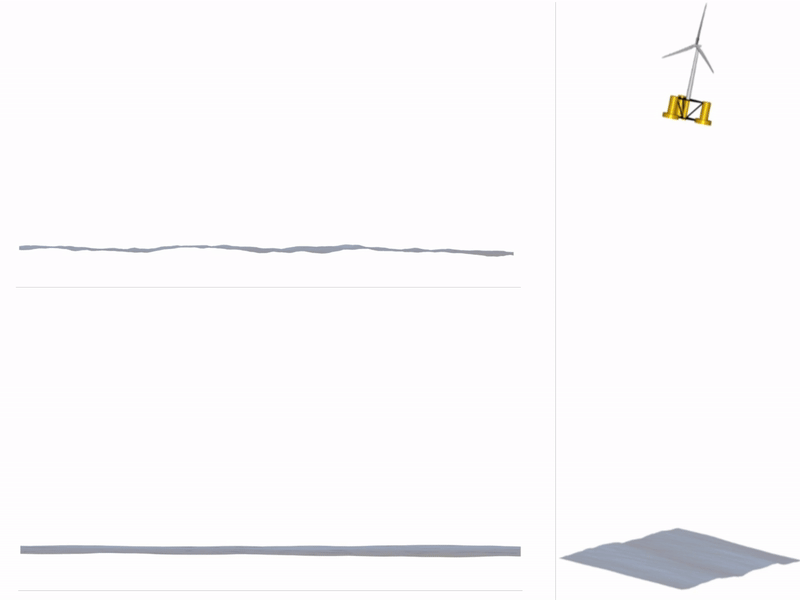Forum
Modifying QBlade for use on micro scale turbines
Quote from Max Vanstraelen on 15. May 2024, 10:14Hi everyone,
I want to use QBlade for a university project in which blades for a micro scale HAWT need to be designed and optimized. With a blade length in the range of only 0,6m, this isnt really the regime QBlade was designed for so im wondering what modifications, if any, to the software might be needed to make QBlade useable in this application. I didnt spot anything in the official documentation but i might have overlooked it so please point it out if there is information about this topic in there which i missed.
Greetings,
Max
Hi everyone,
I want to use QBlade for a university project in which blades for a micro scale HAWT need to be designed and optimized. With a blade length in the range of only 0,6m, this isnt really the regime QBlade was designed for so im wondering what modifications, if any, to the software might be needed to make QBlade useable in this application. I didnt spot anything in the official documentation but i might have overlooked it so please point it out if there is information about this topic in there which i missed.
Greetings,
Max
Quote from David on 15. May 2024, 12:09Hello Max,
in QBlade, there are no upper or lower size limits for the turbines modeled.
The size of the turbine primarily influences the local blade Reynolds number from an aerodynamic perspective.
Therefore, it is important to ensure that the airfoil polars are evaluated within the appropriate Reynolds number range.
BR,
David
Hello Max,
in QBlade, there are no upper or lower size limits for the turbines modeled.
The size of the turbine primarily influences the local blade Reynolds number from an aerodynamic perspective.
Therefore, it is important to ensure that the airfoil polars are evaluated within the appropriate Reynolds number range.
BR,
David
Quote from Shayan Davani on 20. May 2024, 22:44Hi Max and David,
I’m also modeling a blade of a similar scale (with a turbine diameter of less than 0.5 m). I’m curious about your terminology in describing it as a “micro” scale turbine. In your design, are the chord lengths or other dimensions in the scale of micrometers?
One of the challenges I have faced in modeling such a turbine using QBlade is obtaining reasonable airfoil polars for low Reynolds numbers. The built-in XFoil/XFLR5 often exhibits noisy Cl-alpha and Cd-alpha trends with sudden hiccups. Additionally, when I repeat the airfoil analysis, the results do not always match the previous attempts, indicating a repeatability issue for this regime.
Since David is responding to this thread, I would appreciate it if he could share any specific considerations or insights about modeling small-scale turbines with me.
Best,
Shayan
Hi Max and David,
I’m also modeling a blade of a similar scale (with a turbine diameter of less than 0.5 m). I’m curious about your terminology in describing it as a “micro” scale turbine. In your design, are the chord lengths or other dimensions in the scale of micrometers?
One of the challenges I have faced in modeling such a turbine using QBlade is obtaining reasonable airfoil polars for low Reynolds numbers. The built-in XFoil/XFLR5 often exhibits noisy Cl-alpha and Cd-alpha trends with sudden hiccups. Additionally, when I repeat the airfoil analysis, the results do not always match the previous attempts, indicating a repeatability issue for this regime.
Since David is responding to this thread, I would appreciate it if he could share any specific considerations or insights about modeling small-scale turbines with me.
Best,
Shayan
Quote from David on 22. May 2024, 00:14Hello Shayan,
indeed, obtaining “good” polar data at such low Reynolds numbers can be quite challenging. When using XFoil it often helps to “force” a turbulent boiundary layer from the airfoils leading edge by setting the “Forces top transition” and “Forces bottom transition” variables both to 0 (found in the Polar Definition Dialog).
BR,
David
Hello Shayan,
indeed, obtaining “good” polar data at such low Reynolds numbers can be quite challenging. When using XFoil it often helps to “force” a turbulent boiundary layer from the airfoils leading edge by setting the “Forces top transition” and “Forces bottom transition” variables both to 0 (found in the Polar Definition Dialog).
BR,
David


